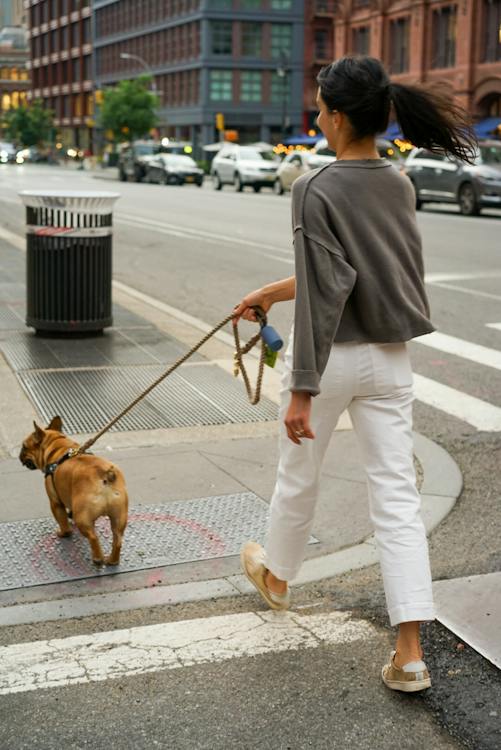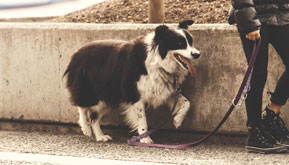So, you have a new puppy. Great! Now you have someone to walk with around the neighborhood. All you need to have is a leash and a collar, and then you can head out the door while towing your new little buddy to any dog walking trails near Philadelphia.
Not so fast! Sorry to break it to you, but it doesn’t work that way.
Like other skills, walking needs to be learned and taught properly. Dogs don’t naturally take to being on a leash and “controlled”. They will not be happy they can’t just take off and chase the first squirrel they see.
Also, keep in mind that if your puppy is very young, you might not want it to introduce him or her into the world just yet. He or she might still need more vaccinations, as recommended by the veterinarian, and you have to keep them away from anything that might cause them harm or diseases. Treat them as babies who need your constant care.
Once the puppy has reached an age of around three months, then you can train him to walk outside with you. First of all, you need a lot of patience because the dog might always pull at the leash at first, making the activity more like a tug-of-war than walking. Second, keep some treats handy while training your dog – she needs positive reinforcement to follow you willingly.
Training Your Dog to Walk on a Leash
1. Pick out the right leash and collar and introduce it to your dog
There are many different types of leashes out there, so make sure to pick one that suits your dog best based on size and weight. Because puppies are still small, it is recommended that you start with a light, flat collar and a light leash. As your puppy gets bigger and stronger then you can use other forms of collars and leashes.
Even while your puppy is a few weeks old, you may start to introduce the collar and leash. Slip them on while your puppy is doing something she enjoys, like playing, feeding or having affectionate moments with you. This will help you make the dog associate “collar and leash time” with “fun time.” This will help to avoid resistance since she is focused on something else while you are putting it on to her. Put on the collar snugly, but not too tight. Let her wear it for a while so that she would get used to it.
2. Teach her commands
For your puppy to be able to walk with you, you have to teach him first how to come to you. While still wearing the leash and collar, move away from a few paces, look right into your puppy and say “Come.” You may use other cues like clucking your tongue, clapping twice, etc. Repeat the command until she does come to you, then reward her with praise or treats. If you kept on repeating and it doesn’t work, command then pull your puppy into you. Even if you did the job, offer her praise still. She must be able to associate her actions with the reward, so would learn to obey you.
Besides “come,” teach her also other basic commands such as “sit,” “stay,” “down,” and “heel.” These will be helpful commands to use while taking your dogs on walks. Be consistent with the use of words and gestures so as to avoid confusion in your dog’s view.
3. Practice walking inside
Before letting her out to the great outdoors, practice walking your dog for a few steps in your living space with a little distraction. With a leash and collar on, guide her around the house so she would get used to you leading her. Dogs are social animals who naturally follow the leader of the pack – and for her situation, the pack leader is you.
4. Take her outside
Once your dog has learned to follow you while on a leash, test its skills on the outside world. Now there are a lot of other smells, sounds, and sights that are new to your puppy, the first walks could be challenging. Keep your eye on her so you know when she is about to go towards something or when she is about to get distracted. Once this happens, tell her to come (or make your cue sound), move away and reward her with a praise and treat.
5. Teach her not to pull on her leash
When distracted, your puppy will try to pull on her leash, but you have to convince her that this would not do her any good. Instead of asking her to stop, teach her how to walk nicely beside you. Avoid expressing your irritation (again, patience!) so that your dog won’t be afraid of you. If she tries to pull you towards somewhere or tries to lunge at something, stop walking. Once the puppy notices that she cannot move forward any longer, she may either stop pulling or turn to look at you. The moment she looks at you and walks towards you again, reward her with a treat and continue walking. If she tries to pull again, then repeat the process. This way, your puppy would understand that pulling will not help her reach her target.
6. Practice and teach her to walk by your side
Try to walk more often and longer once your puppy has learned basic walking skills. Not only will it create learning experiences for your dog, but it also serves as a form of exercise for both of you.
Your dog needs to learn how to walk nicely beside you. Keep the leash short enough so she cannot yank herself away and learn to stay by your side. Lure her into your wanted position by giving her treats. You may need to give her treats after every few steps at first, but you should increase the distance of walks in between treats the more she learns the behavior. Eventually, she would learn to walk beside you without needing any treats at all.
 Dog walking tips
Dog walking tips
Now you know how to train your dog to walk with you, here are some more useful tips that could help:
- Training is all about the rewards. To make your dog like what she is doing, she must be rewarded as soon as she obeys. Some recommend that the first puppy walking training sessions should also serve as meal time, so as to avoid obesity from the frequent treat-giving. Also, take note that the treats must come in small morsels of food and must not take up too much time chewing so that you can get back into the training more easily.
- Always keep an eye on your dog. A lot of dog owners walk their pets without paying any attention to them when for the dog its an exciting time to see the world. Pay attention to where what and who she is looking so that you can also prevent her from lunging. Once you see signals that she is about to lunge, redirect her attention to you with a treat before she can even try to lunge. This process also works if your dog is constantly barking.
- Sometimes, a dog would keep on pulling and lunging even when you stop and stand. The thing to do here is to move away from her target by walking the other way. Don’t pull her in the other direction – simply keep a firm grip on the leash, turn around and not talk, and walk like you normally do. The idea is to make her follow you, not the other way around.
- If your dog is a persistent puller, you might need a quality front clip harness to give you more control and prevent her from constant pulling. If it still doesn’t work, consider enrolling her in obedience classes or training from a professional dog instructor.
- Get to know your dog breed and make sure she gets the right amount of physical and mental simulation her breed needs. Sometimes, a dog would bark a lot and behave badly due to lack of exercise.
- Keep leading your dog even after the walk. When you get home, make her wait patiently as you try to open the door or put away your shoes or remove her leash.
Keep a positive attitude at all times. Keep your cool and be persistent. Do everything in a calm and friendly manner – otherwise, you will not get the results you want. Remember, a little sacrifice would surely pay a great reward in the near future, and that is a nice and harmonious quality time with your dog.


 Dog walking tips
Dog walking tips